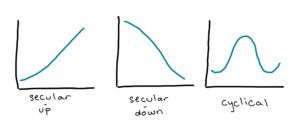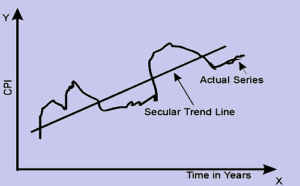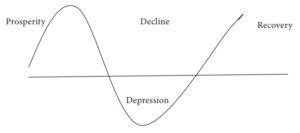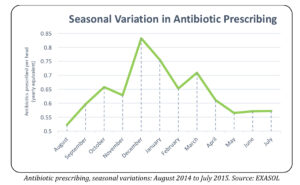OPERATIONS MANAGEMENT
CONCEPT OF TIME SERIES IN FORECASTING
A time series is a collection of data over a period of time- weekly, monthly, quarterly or yearly.
A time series can be used by management to make current decisions and plans based on long term forecasting.
COMPONENTS OF A TIME SERIES
There are four components to a time series:
- Secular Trend
- Cyclic Variation
- Seasonal Variation
- Irregular Variation
-
Secular Trend:

The long term trends of sales, employment, stock prices and other business and economic series follow various patterns. Some move steadily upwards, other decline and some other stay the same over time.
e.g. Increase in prices, Increase in pollution, Increase in the need of wheat, increase in literacy rate, Decrease in death due to advances in science etc.

-
Cyclical Variation:
It occurs at a fixed period due to some other physical cause such as daily variation in temperature.

Cyclical variations occurs due to the ups and downs recurring after a period from time to time. These are due to the business cycle and every organization has to phase all the four phases of a business cycle some time or the other. Four phases of a business cycle are prosperity or boom, recession, depression, and recovery.
-
Seasonal Variation:
Seasonal variations are the changes that take place due to the cyclic changes which occurs in a regular and periodic manner. These changes usually have the same or most similar pattern year after year. When we record data weekly, monthly or quarterly, we can see and calculate seasonal variations. Thus, when a time series consists of data only based on annual figures, there will be seen no seasonal variations. These variations may be due to seasons, weather conditions, habits, customs or traditions.

For example, in summers the sale of cold drink increases and at the time of Diwali the sale of crackers, sweets etc. increases.
-
Irregular Variations:
Irregular variations are fluctuations which are a result of random and unpredictable changes. These changes operate in an absolutely random or erratic manner and do not have any definite pattern. Thus, these variations may be due to floods, famines, earthquakes, strikes, etc.
RELATED VIDEOS FOR CONCEPT OF TIME SERIES:
